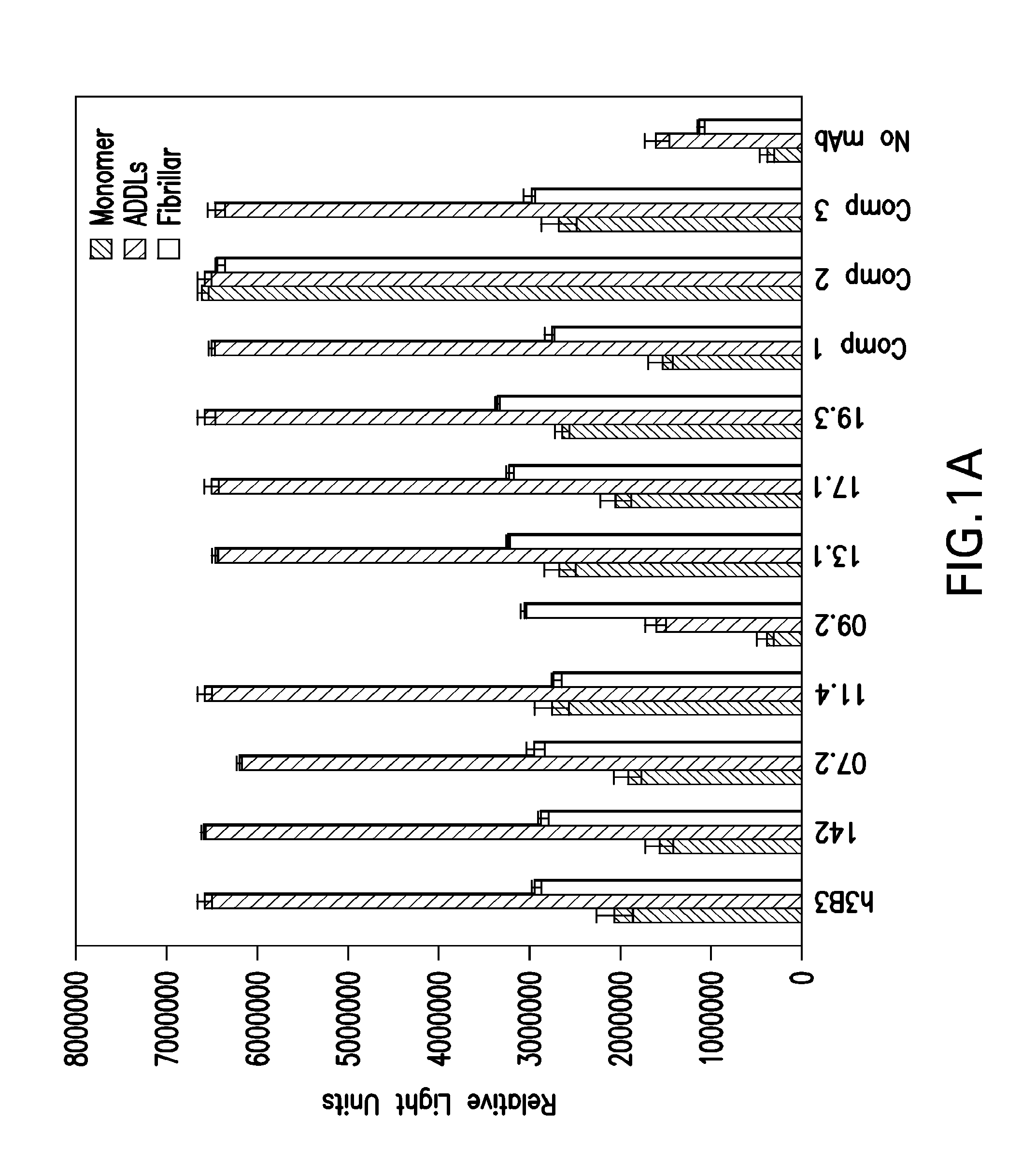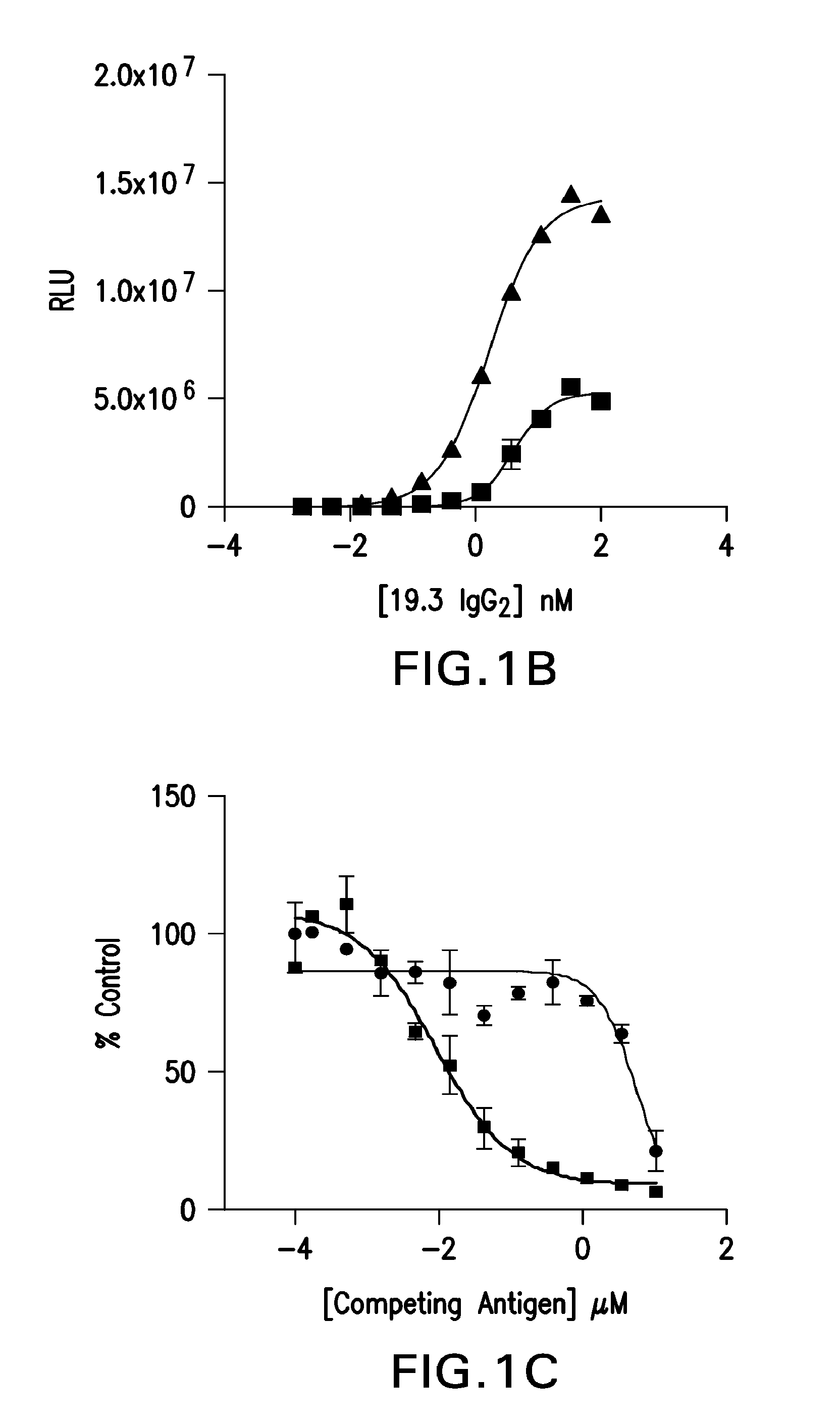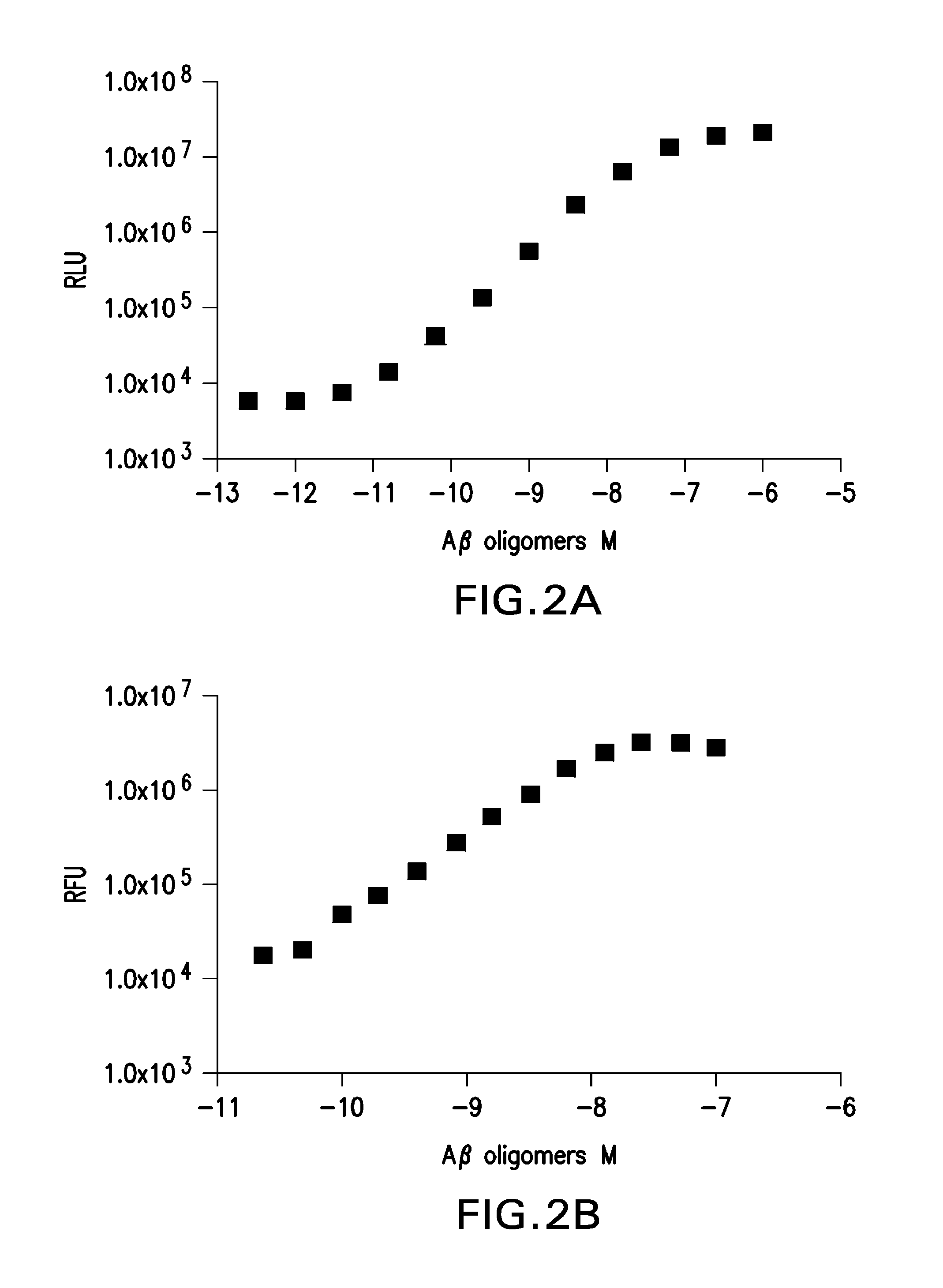Method for detection of amyloid beta oligomers in a fluid sample and uses thereof
a technology of amyloid beta and fluid sample, which is applied in the field of amyloid beta oligomers detection and its use, can solve the problems of difficult assignment of precise molarity, unable to provide the sensitivity required to see these species, etc., and achieve the effect of reliably and sensitively detecting a oligomers
- Summary
- Abstract
- Description
- Claims
- Application Information
AI Technical Summary
Benefits of technology
Problems solved by technology
Method used
Image
Examples
example 1
ADDL Preparations And Aβ
[0054]Aβ40 and Aβ42 (amyloid β peptide 1-40, amyloid β peptide 1-42) were obtained from the American Peptide Co., Sunnyvale, Calif. Aβ42 was dissolved in 1,1,1,3,3,3 hexafluoro-2-propanol (HFIP), Sigma-Aldrich, St. Louis, Mo., to eliminate any pre-existing secondary structure that could act as a “seeds” for aggregation. The HFIP was removed by evaporation to form an Aβ42 film. The Aβ42 peptide film (1 mg Aβ42 dried down from 100% HFIP solvent) was dissolved in 44 μL of DMSO, to which 1,956 μl of cold F12 media (GIBCO®, Invitrogen, Carlsbad, Calif., Cat #ME100014L1) was added with gentle mixing and incubated at room temperature for 18 to24 hours. Samples were centrifuged at 14,200 g for 10 minutes at room temperature. Supernatent was transferred to a fresh tube and was filtered through 0.5 ml column YM-50 filter tube (Millipore, Bedford Mass.; Cat #UFC505096, 0.5 ml) via spin at 4,000 rpm for 15 minutes at 4° C. The retentate was collected by reversing the fil...
example 2
Selection of Anti-ADDL Antibodies
A. Panning Humanized Antibody Library
[0055]An affinity mature library of a humanized anti-ADDL antibody, h3B3, (See U.S. Pat. Nos. 7,811,563 and 7,780,963) was constructed in which part of the light chain CDR3 amino acid sequences were subject to random mutagenesis. To cover the entire CDR3 region, two sub-libraries were built. One library was composed of the parental heavy chain variable region and mutated amino acids in the left half of the light chain CDR3 and the other in the right half of the light chain CDR3. A similar strategy was used for heavy chain CDRs random mutagenesis with three sub-libraries.
[0056]Humanized 3B3 (h3B3) was subjected to affinity maturation using methods known in the art. The h3B3 variable regions were cloned in a Fab display vector (pFab3D). In this vector, the variable regions for heavy and light chains were in-frame inserted to match the CH1 domain of the constant region and the kappa constant region, respectively. In ...
example 3
Determination 19.3 EC50 For Aβ Oligomers And Aβ40
[0061]High protein binding plates were coated at either 100 pmol / well Aβ40 or 50 pmol / well Aβ oligomers in PBS, overnight at 4° C. Next day, plates were washed five times with PBS+0.05% Tween-20 and blocked overnight with Casein blocking buffer (Thermo Scientific, Waltham, Mass.) and 0.05% Tween-20. The 19.3 antibody, identified in Example 2, was tested at 0 to 15 μg / ml in a 12-point three fold dilution series. After two hours at room temperature incubation, the plates were washed and alkaline phosphatase conjugated anti-human IgG (ThermoScientific, Waltham, Mass.) was added at 0.08 μg / ml. After incubation for 45 minutes at room temperature, the plates were washed and Tropix CDP star (Applied Biosystems, Foster City, Calif.) was added. Luminescence was detected after 30 minutes on an EnVision® plate reader (PerkinElmer, Waltham, Mass.). Curve fits were completed using GraphPad Prism (GraphPad Software, Inc., San Diego, Calif.) softw...
PUM
| Property | Measurement | Unit |
|---|---|---|
| Density | aaaaa | aaaaa |
| Density | aaaaa | aaaaa |
| Therapeutic | aaaaa | aaaaa |
Abstract
Description
Claims
Application Information
 Login to View More
Login to View More - R&D
- Intellectual Property
- Life Sciences
- Materials
- Tech Scout
- Unparalleled Data Quality
- Higher Quality Content
- 60% Fewer Hallucinations
Browse by: Latest US Patents, China's latest patents, Technical Efficacy Thesaurus, Application Domain, Technology Topic, Popular Technical Reports.
© 2025 PatSnap. All rights reserved.Legal|Privacy policy|Modern Slavery Act Transparency Statement|Sitemap|About US| Contact US: help@patsnap.com



